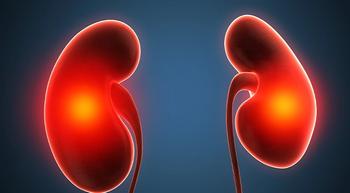
Chemo Combo Adds More to the Treatment Toolbox for Advanced Pancreatic NETs
A new standard of care for advanced pancreatic neuroendocrine tumors demonstrates improvements in survival and tumor shrinkage.
A combination of chemotherapies, Xeloda (capecitabine) and Temodar (temozolomide), may significantly improve survival compared with Temodar alone in patients with advanced pancreatic neuroendocrine tumors (NETs), according to recent study results.
“There was —until this study — a very critical, unmet need for agents that yielded tumor shrinkage for patients with pancreatic NETs. And that was really one of the main reasons for doing this study,” said Dr. Pamela L. Kunz, lead author on the study and associate professor of medicine in the division of oncology at Yale School of Medicine in New Haven, Connecticut, in an interview with CURE®.
Results of the study, which were published in the Journal of Clinical Oncology, demonstrated a median progression-free survival (time during and after treatment when the patient lives without disease progression) of 22.7 months with Xeloda and Temodar and 14.4 months with Temodar alone. Furthermore, response rate, or the rate of tumor shrinkage, was nearly 40% with the chemotherapy combination. Of note, typical response rates for agents in this patient population are between 2% and 9%, Kunz said.
Additionally, median overall survival (time from diagnosis or treatment start when patients are alive) was 58.7 months with Xeloda and Temodar and 53.8 months with Temodar alone.
Moreover, methylguanine methyltransferase (MGMT), a type of biomarker, was associated with a response to the combination chemotherapy regimen. Previous data have demonstrated that MGMT deficiency may predict a better response to Temodar, Kunz mentioned.
“This is definitely considered a positive study. It’s practice changing,” she noted that the chemotherapy combination is a standard of care for this patient population. “This is now in the toolbox for
She added that previous treatment for this patient population was a chemotherapy called streptozotocin. Although it contributed to high rates of tumor shrinkage, it was also associated with many side effects. In contrast, other therapies for patients with advanced pancreatic NETs only stabilized the disease without shrinking the tumor. This led to the need for more treatment options for these patients, Kunz explained.
“I think the reasons to do this (clinical trial) was we wanted a less toxic drug combination, so ideally, better quality of life for patients, and something that had the chance of shrinking the cancer. This is really important for a very specific subset of patients who have larger tumors or pain from large tumors that we ideally need to shrink,” she said.
Over the past 10 to 15 years, new standards of care have been identified for NETs, as it is a relatively newer field compared to other cancers, Kunz mentioned. And now that there are newer and more effective therapies, the next step is to figure out when to use them and in what order to do so.
“Right now, we have high quality evidence, we know that this combination is better and we know that this is an effective treatment, especially for patients who need tumor shrinkage,” she explained. “And this is something I will tailor my treatment choices and treatment options to patients. I will talk about this. And most of my patients with pancreatic NETs, I'll say to them, ‘You'll likely get all of these tools in the toolbox. It's really just a matter of when.’ And we hope to really string all these together to give a long period of time and good quality of life while we do it.”
The side effects with the Xeloda and Temodar combination were moderate, Kunz noted, with more side effects occurring in the combination group. However, that was to be expected as it involves two chemotherapies instead of one. Common side effects included nausea, lowered blood counts, fatigue, diarrhea and dry skin.
For more news on cancer updates, research and education, don’t forget to




